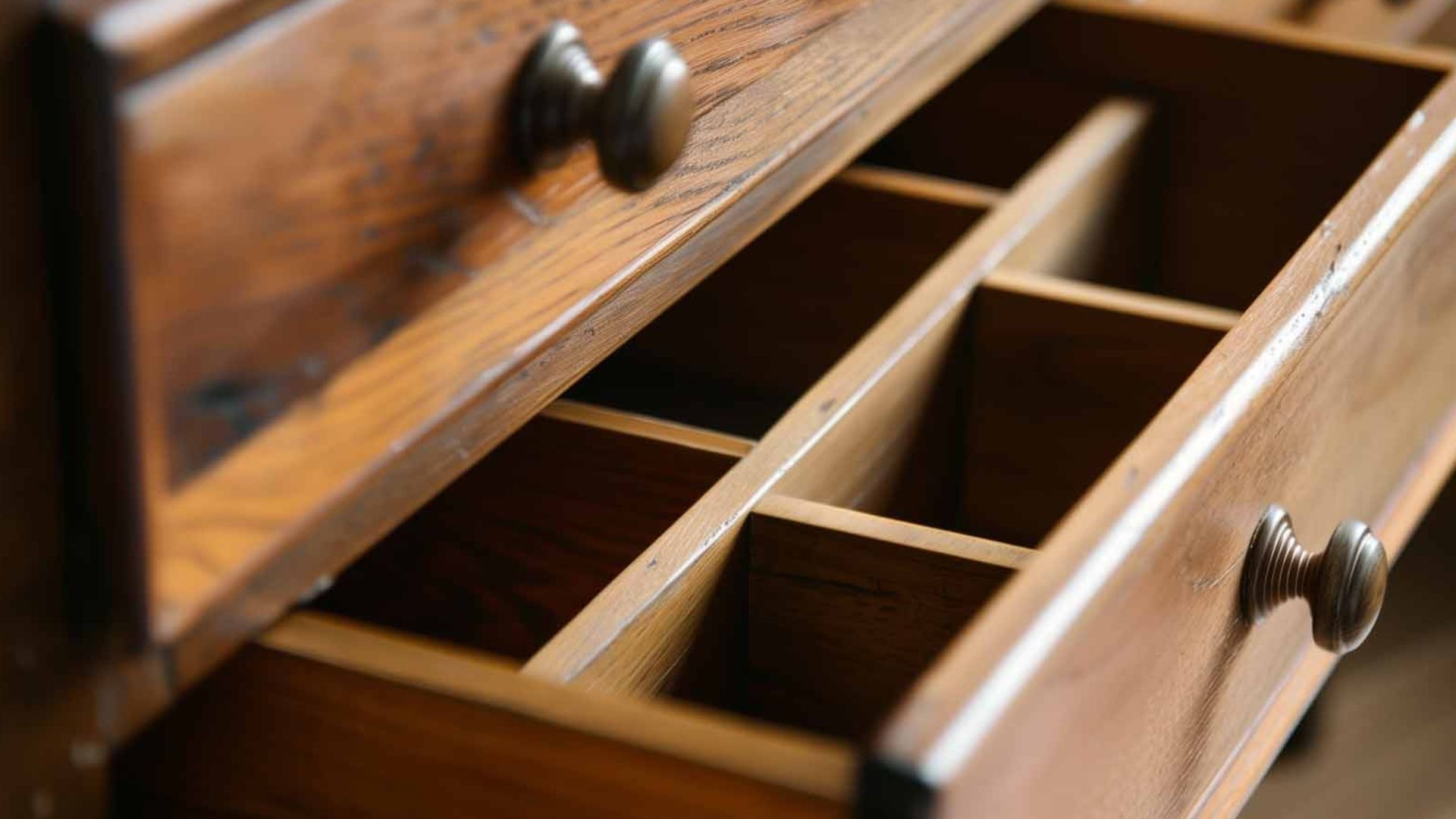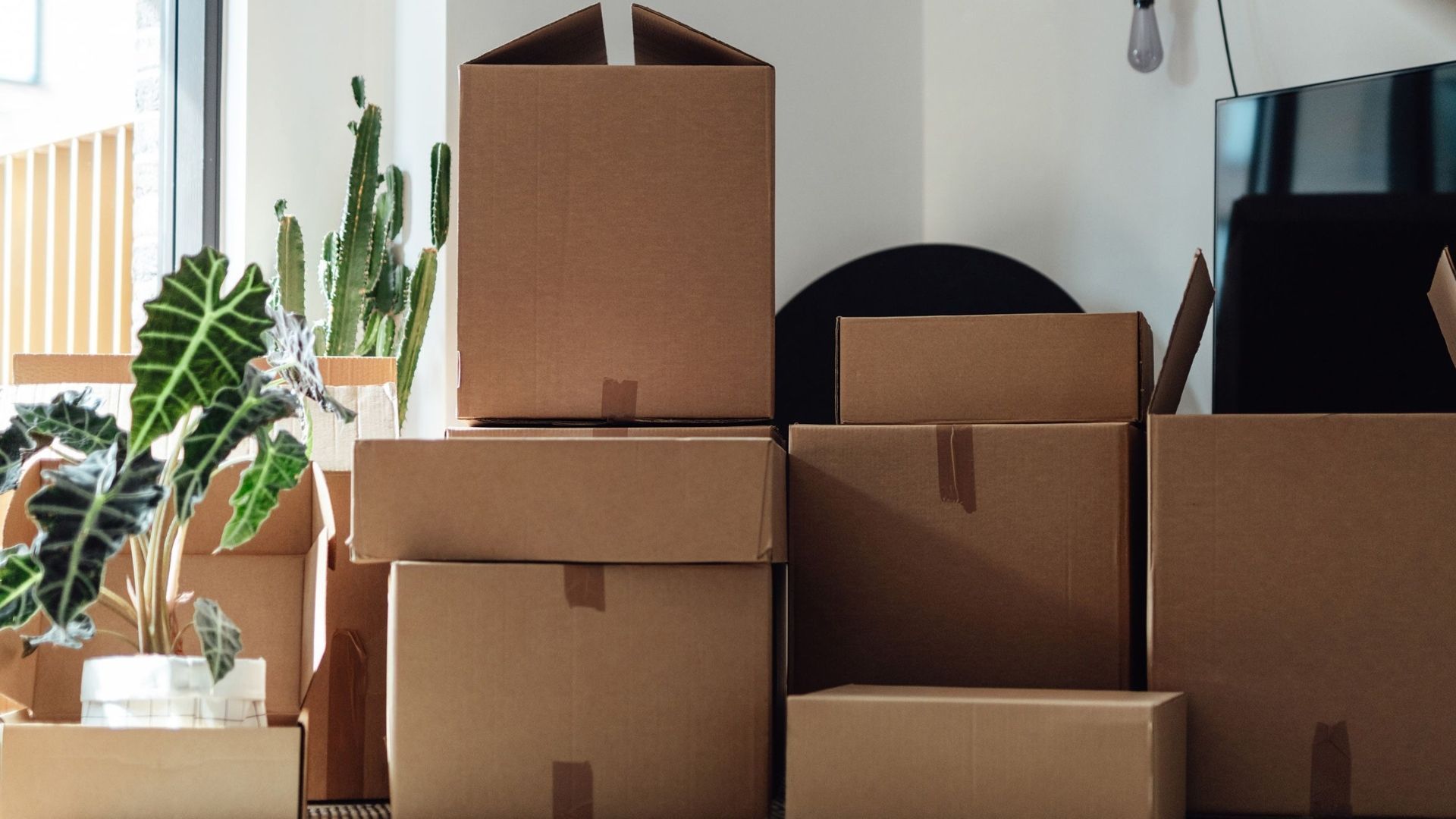How Do I Decide What Size Storage Unit I Need?
You can figure out what size storage unit you need. The key is to make a list of your stuff, measure the big items, and match them to the right unit size. Most people need between 50 and 150 square feet of storage space.
This article will walk you through a simple 5-step process to pick the perfect storage unit size. You'll learn about different unit types, how to measure your belongings, and tips to save money on storage.
Understanding Storage Unit Sizes
Storage units come in many sizes, but they all fit into three main groups: small, medium, and large. Think of it like T-shirt sizes - there's a perfect fit for everyone.
Small Storage Units (25-50 Square Feet)
Small units are like a big closet. They work great for:
- Seasonal items like holiday decorations
- College dorm room stuff
- Small apartment overflow
- Business files and documents
The most common small sizes are 5x5 and 5x10 units. A 5x5 unit is about the size of a large standard closet or a small walk-in closet, while a 5x10 gives you more length to work with.
Medium Storage Units (75-150 Square Feet)
Medium units are the sweet spot for most people. They're perfect for:
- One to two-bedroom apartments
- Small family homes
- Office moves
- Storing furniture and appliances
Popular medium sizes include 10x10 and 10x15 units. A 10x10 storage unit provides 100 square feet (about the area of an apartment bedroom) and can fit the contents of a two-bedroom apartment.
Large Storage Units (200-300 Square Feet)
Large units are like having your own garage. They're ideal for:
- Whole house contents
- Large families
- Business inventory
- Vehicle storage
Common large sizes are 10x20, 10x25, and 10x30 units. A 10x30 storage unit typically fits the contents of a 4-bedroom home.
The 5-Step Process To Choose Your Storage Unit Size
Step 1: Make a Complete List of Your Items
Start by writing down everything you want to store. Walk through each room and note:
- Furniture pieces (beds, dressers, tables)
- Appliances (washer, dryer, fridge)
- Boxes and containers
- Seasonal items
- Electronics
Don't forget about items in your garage, basement, or attic. Make a written list of everything you plan to put in your storage unit. You'll need it to estimate what size you need.
Step 2: Check Your Home Storage First
Before you rent a unit, look around your home for unused space. The last thing you want is to pull the trigger on a storage unit only to realize you could have purchased a smaller (and cheaper) one by storing some of your things in a partly empty closet or an unused corner of your garage.
This step alone can save you hundreds of dollars. The difference between a small and medium-sized storage unit is about $1000 per year, so it's worth taking five minutes to double-check your options.
Step 3: Measure Your Belongings
Now comes the fun part - measuring your stuff! You can use:
- A tape measure
- Yardstick
- Ruler
- Your phone's measuring app
Just jot down the measurement on your cell phone and compare it to available storage unit sizes. There are two ways to measure:
Square Footage Method: Measure the length and width of each item. Add up all the square footage.
Cubic Footage Method: Multiply the length, width, and height of your belongings. If your larger items make a pile that measures 5 x 5 x 5 feet, you'd need a storage unit with at least 75 cubic feet.
Step 4: Pick Small, Medium, or Large
Based on your measurements, decide which category fits your needs:
- Small units (25-50 sq ft): Perfect for seasonal items, college dorms, or small apartment overflow
- Medium units (75-150 sq ft): Great for 1-2 bedroom apartments, small moves, or business storage
- Large units (200-300 sq ft): Ideal for whole houses, large families, or major life changes
Step 5: Research Specific Unit Sizes
Once you know your category, it's time to get specific. You can save money by choosing a unit big enough to store your larger items—but not so huge that you have lots of leftover space.
Look at different storage companies' websites to compare exact dimensions and recommendations. Most facilities have size guides that show what fits in each unit.
Common Storage Unit Sizes and What They Hold
Research from Move.org, a leading moving industry resource, shows that most people underestimate the storage space they need by about 25%, making proper size selection crucial for both convenience and cost savings.
5x5 Storage Units (25 Square Feet)
Perfect for:
- Seasonal decorations
- Sports equipment
- Small furniture
- Document boxes
- College dorm items
Think of it as a large closet that can hold about 20-30 boxes.
5x10 Storage Units (50 Square Feet)
Great for:
- Studio apartment contents
- Bedroom furniture
- Small appliances
- Seasonal items
- Business files
A 5x10 unit can fit the furnishings of a mid-sized bedroom, including a queen-sized bed, a dresser, a TV and several small to medium-sized boxes.
10x10 Storage Units (100 Square Feet)
Ideal for:
- One-bedroom apartment
- Two bedrooms worth of furniture
- Small family storage
- Office moves
This is the most popular size because it offers great value and space.
10x15 Storage Units (150 Square Feet)
Perfect for:
- Two-bedroom apartment
- Three rooms of furniture
- Small house contents
- Business inventory
We recommend these units when you have the contents of three rooms or a two-bedroom apartment to store.
10x20 Storage Units (200 Square Feet)
Great for:
- Three-bedroom house
- Large apartment moves
- Business storage
- Vehicle storage
Our 10x20 storage units are perfect for those who need serious space. With space for up to five rooms' worth of belongings, these units can easily hold items like living room sets, patio furniture, and full-sized appliances.
10x30 Storage Units (300 Square Feet)
Ideal for:
- Four-bedroom house
- Whole family storage
- Business warehouse needs
- RV or boat storage
This is the largest standard size available at most facilities.
Climate-Controlled vs. Regular Storage Units
When choosing your storage unit, you'll also need to decide between climate-controlled and regular units. This choice can affect both your costs and what you can safely store.
What Is Climate-Controlled Storage?
Climate-controlled units are specialized spaces designed to maintain a stable storage environment. This means keeping the temperature within a set range (usually between 55°F and 85°F) and regulating humidity levels to minimize moisture.
When You Need Climate Control
Choose climate-controlled storage if you're storing:
- Electronics and computers
- Wooden furniture
- Musical instruments
- Photos and documents
- Artwork and collectibles
- Clothing and fabrics
- Books and papers
High humidity can lead to mold and mildew, while temperature swings can cause wood to crack and electronics to malfunction. The Environmental Protection Agency (EPA) notes that mold can grow on virtually any substance when moisture is present, making climate control essential for protecting sensitive items.
Cost Difference
Climate-controlled storage ringing in at costs 25 to 40% higher than standard self-storage units. However, trends over the last two years show minimal extra cost due to year-round online sales. So for an additional $10 monthly, you can protect your household inventory from humidity and extreme temperatures.
Storage Unit Costs and Budgeting
Understanding storage costs helps you make smart decisions and avoid surprises.
Average Monthly Costs
The average storage rental price for a standard storage unit typically ranges from $60-$180 per month. The average storage rental price for a climate-controlled storage unit typically ranges from $75-$225 per month.
According to industry data from the U.S. Census Bureau, the self-storage industry has shown significant growth, with Americans increasingly relying on storage solutions for their belongings.
Here's what you can expect to pay:
- 5x5 units: $60-$90 per month
- 5x10 units: $75-$120 per month
- 10x10 units: $100-$160 per month
- 10x15 units: $120-$200 per month
- 10x20 units: $150-$250 per month
- 10x30 units: $200-$300 per month
Factors That Affect Price
Several things can change your monthly cost:
Location: City storage costs more than rural areas. For instance, a 5x5 self storage unit in Los Angeles rents for $118, while a 5x10 unit would cost $171/month.
Season: Prices go up during peak moving times (summer and early fall). According to data from the American Moving & Storage Association, approximately 40% of all moves occur during the summer months, driving up demand and prices for storage units.
Contract Length: Longer contracts often get discounts.
Security Features: Extra security costs more but protects your stuff better.
Accessibility: Ground-floor units with drive-up access cost more than upper-floor units.
Money-Saving Tips
Here are some ways to cut your storage costs:
- Compare prices from multiple facilities
- Ask about discounts for long-term contracts
- Consider location - units outside the city cost less
- Time your rental - avoid peak moving seasons
- Use online deals - many facilities offer web-only discounts
- Share a unit with family or friends (if allowed)
What You Can and Cannot Store
Every storage facility has rules about what you can store. Understanding these rules helps you avoid problems and extra fees.
Items You Can Store
- Household furniture and appliances
- Seasonal decorations
- Clothing and shoes
- Books and documents
- Electronics (in climate-controlled units)
- Sports equipment
- Business inventory
- Artwork and collectibles
Items You Cannot Store
- Food and perishable items
- Hazardous materials
- Illegal items
- Living things (plants, animals)
- Flammable liquids
- Weapons and ammunition (varies by state)
- Stolen property
Always check with your storage facility for their specific rules.
Packing Tips To Maximize Space
Smart packing can help you fit more in a smaller unit, saving you money.
Vertical Storage
Use vertical space to maximize the capacity of your unit. You can install metal shelves and place boxes and other containers on them. Stack boxes with heavier items on the bottom.
Create Aisles
When you pack your storage unit, create a nice center aisle for easy access to all your stuff. You don't want to move everything just to get one item.
Use Uniform Boxes
Same-sized boxes stack better and use space more efficiently. Label everything clearly so you can find items without digging.
Fill Empty Spaces
Use drawers, appliances, and hollow furniture to store smaller items. This trick can save you from needing a bigger unit.
Special Considerations for Different Situations
Moving Between Homes
When you're between homes, you need secure storage that's easy to access. Consider:
- Location near your new home
- Drive-up access for easy loading
- Good security features
- Flexible rental terms
Many local movers can help coordinate your move and storage needs.
Downsizing
When moving to a smaller home, storage can help you keep important items. Focus on:
- Items with sentimental value
- Seasonal decorations
- Furniture that might fit in a future home
- Important documents
Business Storage
Businesses have different needs than homes:
- Easy access during business hours
- Climate control for sensitive inventory
- Larger units for equipment
- Good security for valuable items
Consider commercial movers for business relocations that involve storage.
Student Storage
College students often need storage between semesters:
- Small units work for most dorm rooms
- Summer storage is cheaper than year-round
- Climate control protects electronics
- Close to campus locations save time
The National Association of College and University Business Officers reports that over 65% of college students use some form of storage during their academic years, making this a significant consideration for families planning education expenses.
When To Get Professional Help
Sometimes you need expert help choosing the right storage size:
Complex Moves
If you're dealing with a complex move involving multiple locations, consider professional help. Long-distance moving companies often offer storage services.
Valuable Items
For expensive or sentimental items, professional advice ensures proper protection and sizing.
Business Needs
Commercial storage requirements are different from home storage. Get professional advice for business relocations.
Common Mistakes To Avoid
Learning from others' mistakes can save you time and money:
Choosing Too Small
The biggest mistake is picking a unit that's too small. You'll end up cramming things in, which can cause damage and makes accessing items difficult.
Ignoring Height
The standard storage unit height is 8 feet. Don't forget to use vertical space when calculating what you need.
Not Considering Growth
If you might add more items later, choose a slightly larger unit from the start. It's usually cheaper than upgrading later.
Forgetting About Access
Consider how often you'll visit your unit. If you need regular access, pay extra for convenient location and hours.
Skipping Insurance
Many storage facilities offer various levels of insurance protection at an additional monthly cost. Don't skip this protection for valuable items.
Final Thoughts
Choosing the right storage unit size doesn't have to be overwhelming. By following the 5-step process - making a list, checking home storage, measuring items, picking a category, and researching specific sizes - you'll find the perfect fit for your needs and budget.
Remember that the price difference between small and medium storage units is more than $1000 per year, so taking time to choose correctly can save you serious money. Start with a complete inventory, measure your bigger items, and don't be afraid to ask storage facility staff for advice.
Whether you're moving, downsizing, or just need extra space, the right storage unit can make your life easier. Take your time, compare options, and choose a unit that fits both your stuff and your budget.
Ready to start your storage journey? Contact our team at Last Stop Moving for help with your move and storage solutions.



